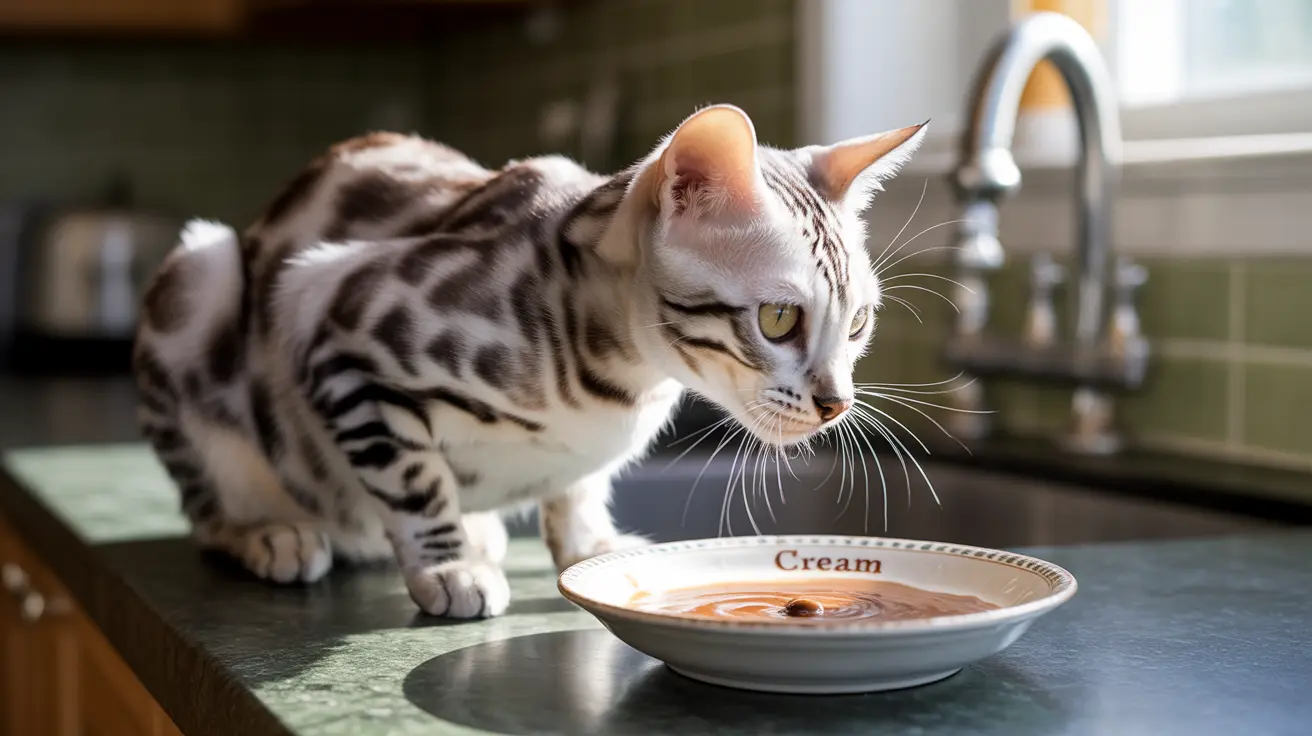Why Cats Can't Digest Cream Properly
Most adult cats are lactose intolerant, meaning they lack the enzyme lactase necessary to break down lactose, the sugar found in dairy products. This biological fact makes cream and other dairy products potentially harmful to your cat's digestive system.
When cats consume cream, the undigested lactose ferments in their intestines, leading to various uncomfortable and potentially serious digestive issues. This process can begin within just a few hours of consumption.
Health Risks of Feeding Cream to Cats
Cream poses several significant health risks to cats:
- High fat content that can lead to obesity and pancreatitis
- Lactose intolerance causing digestive distress
- Excessive calories that can disrupt balanced nutrition
- Potential for harmful additives and sweeteners
Even small amounts of cream can trigger these issues, making it best to avoid dairy products altogether.
Signs Your Cat Has Consumed Too Much Cream
Watch for these common symptoms of dairy intolerance in cats:
- Vomiting and diarrhea
- Stomach bloating and discomfort
- Excessive gas
- Lethargy
- Loss of appetite
- Dehydration in severe cases
Safe Alternatives to Cream for Cats
Instead of cream, consider these cat-safe alternatives:
- Commercial cat milk replacers (specially formulated to be lactose-free)
- Fresh, clean water
- Broth made specifically for cats (without onions or garlic)
- Small pieces of cooked lean meat as treats
- Commercial cat treats designed for feline nutrition
How to Keep Your Cat Safe and Healthy
The best approach to feline nutrition is to stick with specially formulated cat food and treats. Always consult with your veterinarian before introducing any new foods to your cat's diet, and maintain a consistent feeding routine with appropriate portions.
Frequently Asked Questions
Can cats have cream without getting sick?
No, most cats cannot have cream without experiencing digestive issues due to lactose intolerance. Even cats that seem to tolerate small amounts can develop problems with regular consumption.
Why are most cats lactose intolerant and how does this affect their health?
Cats become lactose intolerant after weaning because they stop producing the enzyme lactase needed to digest milk sugar. This leads to digestive problems when they consume dairy products like cream.
What are the symptoms of lactose intolerance in cats after consuming cream?
Common symptoms include vomiting, diarrhea, bloating, stomach pain, and excessive gas. In severe cases, cats may become dehydrated or lethargic.
How can I safely give my cat a creamy treat without causing harm?
Use specially formulated lactose-free cat milk or cat-specific treats. These products are designed to be safe and digestible for felines while satisfying their cravings.
What are some healthy alternatives to cream that I can use as treats for my cat?
Safe alternatives include commercial cat treats, small pieces of cooked lean meat, commercial cat milk replacers, and specially formulated cat broths. Always introduce new treats gradually and in moderation.
Remember, while cats might show interest in cream and dairy products, it's our responsibility as pet owners to protect them from foods that could harm their health. Stick to veterinarian-approved treats and a balanced cat food diet to keep your feline friend healthy and happy.






